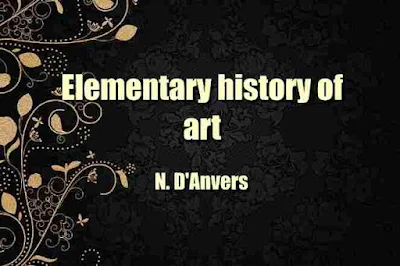Elementary history of art
An introduction to ancient and modern architecture, sculpture, painting, music
From the author introduction:
that the importance of art as a means of intellectual culture is, at last, becoming recognised in England, the want of a simple Introductory Text-book is felt by all engaged in education. To supply this want the present volume has been compiled.
The framework and the greater number of the illustrations are borrowed, with the permission of the publishers, from a small " Guide to the History of Art" which has long been in use in German schools; but this framework has been filled in by reference to standard English, German, and French authorities, and each division of the book has been supplemented by a chapter on Art in England.
A glossary of the principal technical terms employed has been added; and if the "Elementary History" awakens an interest in art, and teach young people to recognise and appreciate beauty under whatever form it is presented to the senses, the aim of the writer will be fulfilled.
The fine arts once played a very important part in the refined and intellectual life of this country, but since the close of the middle ages, they have been undervalued and neglected among us. Happily, at the present day, many signs of a revival are presenting themselves, and art is now in much greater danger of being misunderstood than forgotten.
Classical languages are no longer the only instruments of culture, and literary attainments have now ceased to be considered — as they for long were — the sole objects of a cultivated man's ambition; for causes of an almost opposite nature have largely directed attention to science and to the arts. The marvellous advances, brilliant discoveries, and splendid attainments of our foremost natural philosophers have been among the most powerful of the influences which have secured for scientific research so large a share of public attention. In other words, we have cared for science because it is living and growing under our eyes.
With art the case is different. It is a revival and not a fresh growth which we are witnessing. Without disparaging the artists of the present century, it is in- disputable that, with the exception of music and to some extent of landscape, they have in no case carried the arts so far as they had already advanced at earlier periods of their history.
The arts have revived because a time of prolonged peace and the accumulation of great wealth have given to many of the rich the leisure and means to surround themselves with objects of refinement and luxury; while the marvellous spread of illustrated publications, and the increased facilities for travelling and observing the buildings and pictures with which the older countries of Europe teem, have tended to rouse among all ranks of the community interest in works of art.
The present movement is essentially a popular one. It is not headed, like the scientific movement, by the foremost men of the day, with all their acuteness and knowledge stimulated to the full. It has rather taken its rise among those who are but ill-informed on artistic subjects, and therefore stand peculiarly in need of guidance and instruction. Nothing could consequently be more appropriate to the wants of the day than the publication of works on the fine arts calculated to give sound information in a popular form.
The present Elementary History of Art may, therefore, be held to be well-timed. It is not within the power of this or of any book to give an intimate knowledge and keen appreciation of art. That can only be attained by the zealous study of works of art themselves; and it is difficult to gain a sufficiently intimate acquaintance with such works for this purpose, except after going through some portion at least of the training of a practical artist.
Few, if any, can thoroughly appreciate an artistic rendering of outline, of colour, or of form, without some skill in drawing, colouring, or modelling. A great deal, however, remains to be known about works of art which can be learned from books, which those who cannot draw a line may most usefully learn, and of which even those who practise some branch of the fine arts with great success are often ignorant. It is the object of this little volume to convey an outline of so much of this knowledge as can be comprised under the form of a History.
Perhaps the best starting point for the study of all, or any of the fine arts, is their history. In the case of each country where art has been cultivated, we have a simple commencement, a gradual growth, a culminating point, and a decline; and it is while endeavouring to understand the course which was run by anyone art, or anyone school of artists, that we can best acquire a knowledge of the principles as well as the practice of the art or school in question.
Such knowledge also enables the student to appreciate at their due value the works of any individual artist with which he may meet and to assign to them their true position.
At a time, then, when some knowledge of pictures and architecture, of statues and of music, is becoming indispensable to those who desire to share in the culture of the day — when the architecture of public and private buildings is constantly attracting attention — when the galleries of this country are being thrown open to the public — and when many thousands of our countrymen and countrywomen visit the Continent each year — the History of Art has a great claim to be studied. It is quite true, as has been pointed out, that a knowledge of history does not necessarily convey the power to perceive the beauty of works of art.
Download Elementary history of art - 30 MB contains Illustrations

